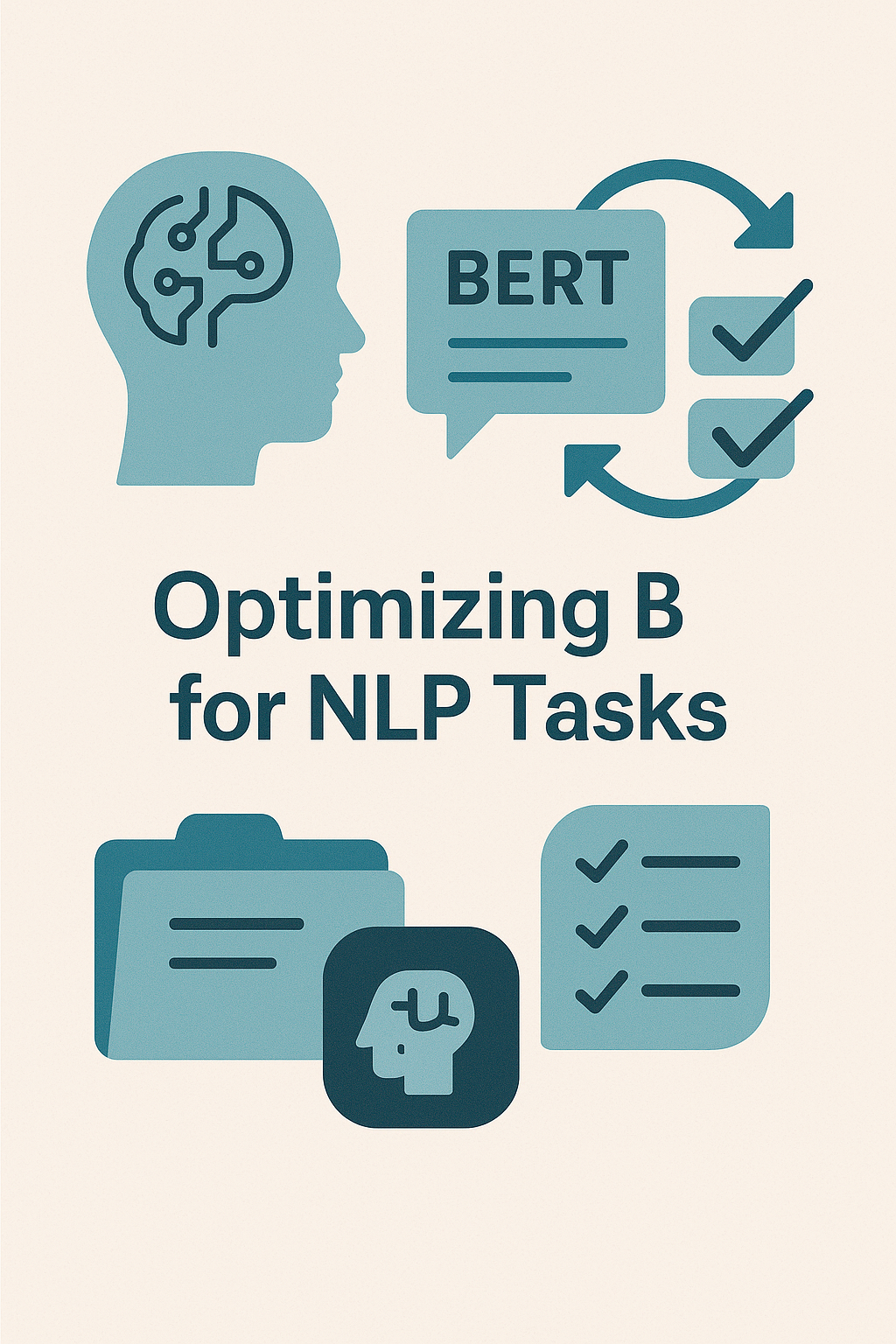Introduction
Bidirectional Encoder Representations from Transformers (BERT) has revolutionized Natural Language Processing (NLP) by providing deep contextual understanding of language. However, its large model size and computational requirements pose challenges for deployment in resource-constrained environments. This article explores various optimization techniques to enhance BERT's efficiency without compromising performance.
Key Optimization Techniques
- Fine-Tuning: Adapting a pre-trained BERT model to specific downstream tasks by training it on task-specific data. This process involves adjusting the model's weights to minimize the task-specific loss function.
- Pruning: Removing less significant weights from the model to reduce its size and computational load. Techniques like magnitude-based pruning can be applied to identify and eliminate these weights.
- Quantization: Converting the model's weights from floating-point precision to lower-bit representations (e.g., int8), reducing memory usage and speeding up inference. Integer-only quantization, as implemented in I-BERT, enhances performance on hardware optimized for integer operations :contentReference[oaicite:2]{index=2}.
- Knowledge Distillation: Training a smaller model (student) to replicate the behavior of a larger model (teacher), maintaining performance while reducing model size. DistilBERT is an example of this approach, achieving 97% of BERT's performance with 60% faster inference times :contentReference[oaicite:3]{index=3}.
- Adaptive Tokenization: Employing strategies like adaptive tokenization to handle complex tasks such as summarization and question answering, ensuring efficient processing of input sequences :contentReference[oaicite:4]{index=4}.
- Task-Adaptive Compression: Utilizing methods like AdaBERT, which employs differentiable neural architecture search to compress BERT into task-specific models, achieving significant reductions in inference time and model size while maintaining performance :contentReference[oaicite:5]{index=5}.
Mathematical Perspective: Fine-Tuning with Cross-Entropy Loss
During fine-tuning, BERT is trained on a downstream task using a loss function such as cross-entropy. The cross-entropy loss for a classification task is defined as:
\[ L = -\sum_{i=1}^{N} y_i \log(p_i) \]
Where:
- \(N\): Number of classes
- \(y_i\): True label (1 if the class is correct, 0 otherwise)
- \(p_i\): Predicted probability for class \(i\)
Minimizing this loss function adjusts the model's weights to improve classification accuracy on the specific task.
Real-World Applications
- Sentiment Analysis: Fine-tuning BERT on labeled sentiment datasets enables accurate classification of text sentiment, such as positive or negative reviews.
- Named Entity Recognition (NER): Adapting BERT to identify entities like names, dates, and locations in text, facilitating information extraction tasks.
- Question Answering: Fine-tuning BERT on QA datasets allows it to answer questions based on context, as demonstrated in the SQuAD benchmark.
- Text Summarization: Utilizing BERT's understanding of context to generate concise summaries of long documents.
Best Practices for Optimization
- Layer Freezing: Freezing the weights of earlier layers during fine-tuning to reduce training time and prevent overfitting :contentReference[oaicite:6]{index=6}.
- Progressive Layer Unfreezing: Gradually unfreezing layers during training to allow the model to adapt more effectively to the task.
- Learning Rate Scheduling: Implementing learning rate schedules, such as warm-up followed by decay, to stabilize training and achieve better convergence.
- Regularization Techniques: Applying methods like dropout and weight decay to prevent overfitting and improve generalization.
Further Reading
Conclusion
Optimizing BERT for NLP tasks involves a combination of fine-tuning, model compression, and efficient inference techniques. By applying these strategies, practitioners can leverage BERT's powerful language understanding capabilities while addressing the challenges of resource constraints in real-world applications.








